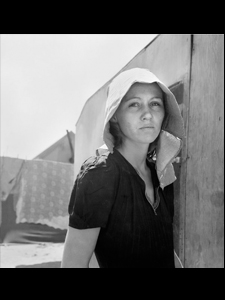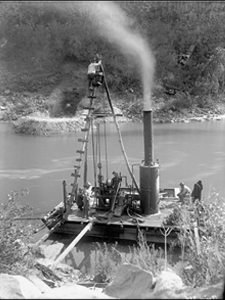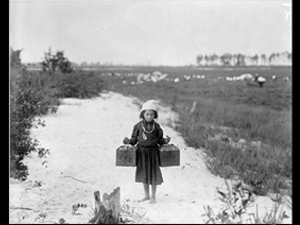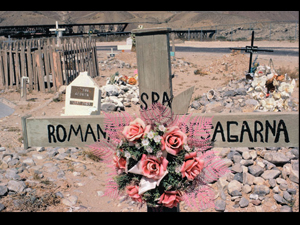Online Magazine
Recent Posts
- Safeguard your Cellphone Photos
- Black & White to Color – Instantly
- Wearing Many Hats
- Video Roundup
- Rescuing Your Blurry Pictures
- Showing Their Age
- What is Your Angle?
- Panorama Photos
- Humorous Photos
- Close Ups
- Fisheye Pictures
- Photo Antiquities
- Printing Big
- Appreciating Scale
- Celebrity Sightings
Tags
More Places to Go
- Free "How-To" Books “How To” books for popular cameras 0
- Vist Us on Facebook keep in touch with us on Facebook 2
Archives
- July 2023 (1)
- March 2023 (2)
- February 2023 (1)
- December 2022 (1)
- October 2022 (1)
- September 2022 (8)
- August 2022 (9)
- July 2022 (1)
- June 2022 (1)
- June 2021 (1)
- May 2021 (1)
- March 2021 (5)
- February 2021 (4)
- January 2021 (2)
- April 2019 (1)
- March 2019 (1)
- February 2019 (1)
- October 2018 (2)
- April 2018 (1)
- March 2018 (4)
- February 2018 (1)
- November 2017 (1)
- August 2017 (1)
- June 2017 (1)
- April 2017 (1)
- March 2017 (5)
- February 2017 (2)
- January 2017 (1)
- October 2016 (1)
- September 2016 (1)
- August 2016 (1)
- July 2016 (1)
- May 2016 (1)
- April 2016 (1)
- March 2016 (2)
- February 2016 (1)
- January 2016 (2)
- December 2015 (1)
- November 2015 (1)
- October 2015 (3)
- April 2015 (1)
- March 2015 (5)
- February 2015 (1)
- January 2015 (4)
- December 2014 (2)
- November 2014 (5)
- October 2014 (2)
- September 2014 (1)
- August 2014 (2)
- July 2014 (1)
- May 2014 (1)
- April 2014 (5)
- March 2014 (5)
- December 2013 (2)
- November 2013 (18)
- October 2013 (1)
- September 2013 (1)
- August 2013 (1)
- July 2013 (1)
- June 2013 (3)
- May 2013 (1)
- April 2013 (2)
- March 2013 (1)
- February 2013 (1)
- January 2013 (1)
- December 2012 (1)
- November 2012 (2)
- October 2012 (2)
- September 2012 (5)
- August 2012 (2)
- July 2012 (1)
- June 2012 (1)
- May 2012 (1)
- April 2012 (4)
- March 2012 (1)
- February 2012 (1)
- January 2012 (3)
- December 2011 (1)
- November 2011 (3)
- October 2011 (1)
- September 2011 (2)
- August 2011 (2)
- June 2011 (3)
- May 2011 (4)
- April 2011 (8)
- March 2011 (8)
- February 2011 (10)
- January 2011 (6)
- December 2010 (11)
- November 2010 (14)
- October 2010 (6)
- September 2010 (12)
- August 2010 (2)
- July 2010 (4)
- June 2010 (3)
- May 2010 (1)
- April 2010 (1)
- March 2010 (2)
- February 2010 (1)
- January 2010 (1)
- December 2009 (1)
- November 2009 (2)
- October 2009 (2)
- September 2009 (1)
- August 2009 (3)
- July 2009 (2)
- June 2009 (1)
- May 2009 (2)
- April 2009 (1)
- March 2009 (2)
- February 2009 (1)
- January 2009 (3)
It’s time for CES again
04th January 2012
What’s in store for 2012?
The Consumer Electronics Show kicks off again in less than a week.
 |
For those of you who aren’t familiar with the CES, it’s a huge technology trade show at which the electronic and associated manufacturers showcase their new products. In recent years, CES has attracted more than 120,000 attendees to the Las Vegas Convention Center and surrounding venues. |
There are literally miles of aisles lined with home theaters, thundering auto audio systems, pulsating illuminated LED signs, massive large-screen televisions, deafening stereo systems and wacky computer game displays. It’s a crowded, noisy affair.
Despite the negatives, CES has been a “must” show for me. In fact, I find it an exciting place to be. So much so that I’ve been to attending this annual event (for a while it was held twice a year) for more than 30 years to learn and write about the new products that are applicable to our businesses. For the first time, the Photographic Marketing Association trade show is being folded into this year’s CES. I suppose this tells us that photographic equipment is now considered part of the consumer electronics realm. Merging of these trade shows into one makes it even more convenient for me to learn about new photo equipment as well.
On the photography side, I expect these will be the trend this year:
- There will be more offerings of high end interchangeable lens cameras (ILC). This relatively new breed are imirrorless and use real-time electronic viewfinders and are significantly smaller than DSLRs. The Nikon V1 and Sony NEX5 are current examples that have compelling and innovative features
- It looks like we’ll see big improvements in the video capability of both DLSRs and ILCs. The norm will be 1080p HD video, full-time autofocus amd complete manual control of exposure. These devices are reinventing the way in which video is recorded.
- Watch for even better images from cellphones. Some models already have large 8MP sensors with builtin flash. There is a striking difference in quality from last year’s models.
- Slowing sales of compact cameras hasn’t deterred manufacturers from improving image quality. In particular, the trend is towards better low-light performance by using more responsive image sensors and wider aperture lenses. This will most likely continue but at a higher price.
- Again with compacts the major brands are also competing aggressively on a feature basis. For example the Samsung SH100 has builtin wireless transfer and several company’s have cameras with builtin GPS. I expect that features such as these will become very popular.
- Last fall in China, I met with several manufacturers who were pushing easy to use, all-weather still and video cameras. This may become a popular category as the younger generation continues the YouTube tradition of recording and producing movies of their varied outdoor activities.
On the technology side I will be looking at these items:
- I just read that Microsoft will be showing their upcoming Microsoft Flight at the show This is of special interest to me as one of our other businesses sell software for their older Flight Simulator.
- There are likely to be a slew of new and improved tablet from a variety of manufacturers. Since the launch of the iPad, these devices have made a dramatic shift in mobile computing behavior. With the recent addition of reading devices such as Amazon’s Fire and Barnes & Noble’s Nook Tablet, the market is heating up quickly.
- Cellphones have made the most impact on consumer behavior in the last few years and I’ll be interested in seeing the new features that are upcoming.
- For several years, robotic devices have been randomly appearing at CES. For the most part, this promising technology has been confined to a few areas such as floor cleaning devices and children’s toys. I’m hoping to see new and innovative consumer-level robots at the show.
I’ll report back to you about the show soon.
Yes, I’m looking forward to another CES. By the way, I’m also looking forward to a few days away from the cold and snowy weather here in Michigan.
Written by Arnie Lee
Tips for buying a used camera
05th November 2011
Buying A Preowned Camera – Caveat Emptor
Although the prices of new dSLR cameras continue to drop as manufacturers release newer models, there are still many reasons you may want to consider a buying preowned camera.
Price is perhaps the main reason for many people. Are you currently using a point-and-shoot camera but are yearning for higher quality photographs? Then buying a preowned dSLR may not be
such a bad way to go.
Newcomers to photography aren’t the only ones shopping for preowned cameras. Many experienced photographers use preowned cameras as backups or for times in which they don’t want to risk damaging their newer equipment when shooting in difficult locations, bad weather conditions, etc.
Although previewing a preowned dSLR camera won’t take a lot of time and isn’t as big of a purchase as a preowned car, for example, you should still “kick the tires.” Caveat emptor (“let the buyer beware”) should be a reminder especially if you’re shopping online and cannot touch and feel the camera. Photography terms can be intimidating so if you’re fairly new to photography, take a friend with you who knows about photography. Meet the seller during the day if at all possible. The natural sunlight will help you better test the quality of the camera and its features easier (not to mention that it’s safer). In fact, keep safety in mind at all times.
- First check the battery compartment. If you see any sign of corrosion or battery leakage, stop right there and consider moving on to another camera. Otherwise, check the battery doors and battery springs that can become loose over time. Make certain it’s easy to insert the battery back in the compartment.
- Check the camera body carefully. Look for dents, scuffmarks, scratches, etc., that indicate a dropped or otherwise carelessly handled camera.
- Bring a memory card for testing. Don’t necessarily trust the card that nay already be in the camera. You want to make certain that your card works in the camera. Check all the terminals and look for bent pins or any “gunk” that is stuck in the pins.
- Turn the power switch on and off a few times.
- Examine the LCD monitor and adjust the contrast higher and lower.
- If the camera has a live view or video mode, make sure they’re working properly.
- Does the viewfinder look clean? It’s not uncommon to see a bit of dust or some dirt particles, but reconsider the camera if you see defects or any foreign objects in the viewfinder.
- Make certain the diopter control wheel works.
- Ask how many photos the seller has taken (actuations) with the camera. The camera’s shutter has a “life expectancy” so a replacement may be expensive. Most cameras are rated for about 100,000 actuations. So, you can probably consider a camera with less than 10,000 actuations to be in relatively new condition. A camera with 50,000 or more actuations is “well-used” and “very well used” if it has more than 100,000 actuations.
Flash
- Check that pop up flash actually pops up by pressing the flash button (if available on the camera).
- Test the camera in dark conditions to make sure it flashes.
- If the camera has a hotshoe, make sure it too is functioning.
- Check the remote IR flash if it’s available with the camera and you have plans to use it.
Lenses
- With a lens attached, activiate the camera’s autofocus.
- Remove the lens carefully. Check the lens mount for scratches or other damages. It’s important that the lens mount is solid especially if you’ll be using different lenses.
- Peek inside the camera to the mirror box. Make certain no dirt or water marks are on it.
Test shots
OK, now that you’ve looked over the camera and are satisfied, it’s time to snap some photos. This is when it’s a good idea to bring along someone who is familiar with photography and let him/her do the testing for you.
- Does the shutter work and sound OK?
- Do all of the buttons and dials function properly?
- Make certain that all modes on the dial work as they should.
- Taka a few photos with different aperture and shutter speed settings to check whether the exposure has changed.
- Set the diopter control wheel correctly for your eyes, select a focus point and take a manually focused photograph.
- Test the multiple shot (sometimes called burst mode) feature of the camera if it’s available. You should do this for at least two reasons. The first is, of course, to test the mode itself. The second reason is that if the shutter is indeed failing, it’s possible that you can hear the shutter get slower.
- Compose a picture, select a focus point and autofocus on it and capture it. Verify the photos and focus point are in focus. (This is probably best done with a lens you know is good.)
- Shoot a few photographs in spot metering mode. Make certain the meter actually changes based on the scene you’re shooting.
- This is a test for the LCD monitor. Take one fully underexposed (black) and one fully overexposed (white) photo. Then look at each carefully in the LCD monitor. You’re looking for dead pixels on the LCD monitor and on the sensor.
Often overlooked
- Ask about a lens cap, users manual, quick start guide, etc. that originally came with the camera.
- The battery charger is one item that is often forgotten so make certain that it works.
- Although not always a reliable way to see how much action the camera has been through is to look at the camera strap. You may want to consider another camera, and possibly another seller, it the seller maintains that the camera has barely been used, but the strap is worn and faded. A camera strap won’t wear down much with gentle and minimal use. This, of course, doesn’t mean that the seller didn’t replace the strap with a newer one.
- Will the seller would agree to ask about a warranty period (even a week or two)?
That should be about it. In addition to the these suggestions, use some common sense and you should do fine.
Written by Scott Slaughter
Photographers From The Past
27th September 2011
Need Some Inspiration? Look To The Past
Every photographer needs a boost of inspiration once in awhile. Perhaps there is no better way to get some needed inspiration than to look at the work of the great photographers of the past.
You may wonder why you should look at their photography. One simple reason is that we can learn from their work. They had to be good photographers. After all, we still view, respect and admire it today. Consider the equipment they were using at the time. And many didn’t have the advantage of learning from earlier photographers because they were among the first.
They grappled with exposure, lighting and shutter speed – the same things we tackle today with our digital photography. We can learn about photographic techniques – composition, mood, lighting, etc., from these early photographers that we may have not considered beforehand.
One name that is on everyone’s list is Ansel Adams.
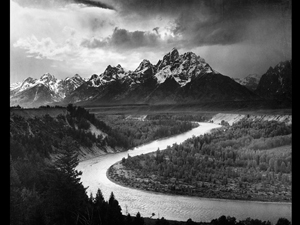 |
“The Tetons – Snake River” by Ansel Adams, Wyoming, 1942 (Photographer: Ansel Adams | Courtesy U.S. National Archives) |
Furthermore, there are many different styles of photography available. You can think of a favorite news photographer, sports photographer, fashion photographer, nature photographer and so on.
Where can you find these photographs?
The federal government is the best place to start because many of these photographs are in the public domain. I recommend visiting the National Archives website (www.archives.gov). They have a wonderful section called “Picturing The Century” with several galleries and exhibits (www.archives.gov/exhibits/picturing_the_century/galleries/newcent.html#).
Another website is the “Prints & Photographs Online Catalog” section at the U.S. Library of Congress (www.loc.gov/pictures/)
Why not check out the work of the famous early photographers? The following are some photographers and their work I came across while visiting these websites.
Dorothea Lange (1895-1965)
Even if you’re not familiar with her name, you’ve probably seen Dorothea Lange’s photographs.
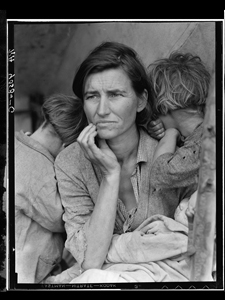 |
Migrant Mother is arguably one of the most recognized photographs taken during the Great Depression. (Photographer: Dorothea Lange | Courtesy U.S. Library of Congress) |
She was born in Hoboken, New Jersey. She became a photographer when she was eighteen years old at a time when there weren’t many women photographers. She, however, became one of the most influential American documentary photographers and photojournalists.
She’s best known for her Depression-era work for the Farm Security Administration (FSA). She brought out the despair, suffering and hopelessness that people endured throughout the Great Depression but with a compassionate and caring way. Her work had a tremendous influence on the development of documentary photography and continues to influence photographers today.
George Ackerman (1884-1962)
George Ackerman began working as a photographer for the Bureau of Plant Industry in 1910 and later worked for the Federal Extension Service in 1917. He photographed rural life as he traveled across the United States during his years working for the U.S. Department of Agriculture.
The total number of photographs that George W. Ackerman took in his years with the U.S. Department of Agriculture will never been known but it’s quite possible that’s more than 50,000 photographs. (One reason the total will never be known is that his photographs appeared in many private and government agricultural publications, but he wasn’t always given credit for them.) Although 50,000 photographs over forty years may not seem like many in our digital photography age, keep in mind this was years before digital and the equipment he used was large and cumbersome.
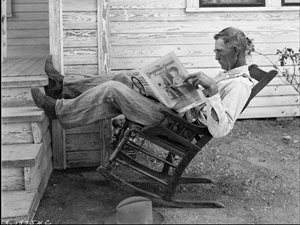 |
Photograph called simply “Farmer Reading His Farm Paper” in Coryell County, Texas, September 1931 (Photographer: George W. Ackerman | Courtesy U.S. National Archives) |
Walter Lubken (1881-1960)
Walter J. Lubken is another photographer to take thousands of photographs after he was hired by the federal government. Lubken served as the official photographer from 1903 to 1917 for the United States Reclamation Service (USRS).
He carefully photographed over two dozen irrigation projects as well as other government sponsored projects throughout the western United States. This is very impressive when you consider that he had to travel with his large camera, glass-plate negatives and other supplies.
In addition to the irrigation projects, the USPS also asked Lubken to photograph the towns and fars near the irrigation projects. The USRS was preparing a series of articles that were to encourage people ot settle on land reclaimed from the desert through irrigation.
Lubken left professional photography after completing his work for the USRS but went back into photography in a big way in the 1930s when he photographed the building of Boulder Dam (now called Hoover Dam) near Las Vegas, Nevada.
Lewis Hine (1874-1940)
Lewis Hine was born in Oshkosh, Wisconsin and studied sociology at the University of Chicago, Columbia University and New York University. He used his cameras to help improve social reform in the United States.
He became the photographer for the National Child Labor Committee (NCLC) in 1908. Hine photographed and documented child labor in American industry for the next several years to help the NCLC’s lobbying efforts to end the practice.
His photographs, such as the following, were critical in changing the child labor laws in the United States.
Danny Lyon
Unlike the other photographers in this article, Danny Lyon (1942-) is still shooting photographs today and is one of the most original documentary photographers of the late 20th century.
Lyon grew up in a middle-class section of New York City and became interested in photography when he was seventeen years old. He studied history at the University of Chicago and in 1962 joined the civil rights movement. He soon became a staff photographer for the Student Nonviolent Coordinating Committee (SNCC).
You’ll find many more photographs, galleries and exhibits at both the National Archives and the Library of Congress websites. In addition to many recognized photographers are “unknown” photographers whose work we can still enjoy today.
I hope you can spend a lot of time looking through the work of some of the great photographers of past decades. Maybe we can all gain some inspiration from these masters.
Written by Scott Slaughter
